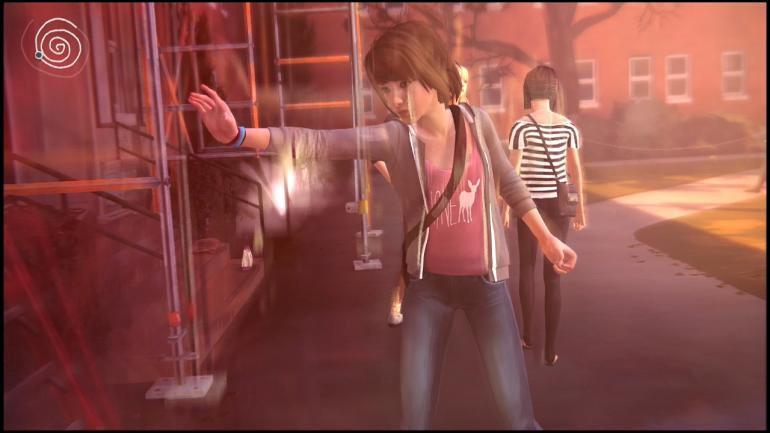Life is Strange is an episodic game created by Dontnod Entertainment—it is playable on a host of consoles, in addition to desktop/mobile, and I played the first episode on PS4. Its mature content makes the target audience likely that of 14+, especially given that the game centers around high school students. It uses a (single) player vs. game structure and hones in on narrative, discovery, and challenge core types of fun. In particular, narrative and discovery were highlighted through the early sections of the game, with lots of details to (even optionally) explore that compelled me to learn the ongoings of the story and characters.
Narrative is woven into the mystery of Life is Strange by constantly providing the player with unanswered questions. The opening depicts Max in a storm before she “awakens” into class; missing person posters suggest the disappearance of Rachel Amber; decision points (where a player can rewind, but ultimately must pick a course of action that influences the ensuing story) create forced choice for the player. At every step, the player has numerous things hanging over their head that it seems only moving ahead will help resolve. Max, too, is uncertain about the arrival of her own powers and how they can be used.

The mechanics support the mystery in a few different ways. Having lots of people, items, and environmental details to interact with (if you want) facilitates a curious feeling of “hmm, I wonder if that is going to offer the specifics I’m looking for”—however, with most of these being optional, it’s not overbearing in the sense that one needs to search for every nook and cranny of the scenes. Additionally, the rewind mechanic inherently spurs a questioning nature—every time something happens, you’re wondering whether an alternative outcome exists. And, even if the narrative is generally linear, seeing your choices have an effect on the game sparks the obvious speculation about what outcomes the other paths might lead to.
I’d consider changing the rewind function to either be limited in its usage or restricted by time. Although the exploration sections are reasonable to be more unbounded, it’s helpful to protect the player from mulling over things too much, since the aim is ultimately to keep progressing. I’d also love to see a little bit of customization on the end of the characters—if there’s energy going towards diverting paths, how about being able to choose an outfit for the day or more unique dialogue that influences other aspects of the game?



